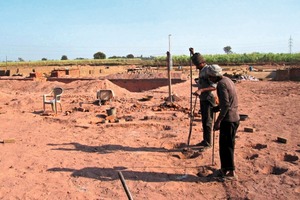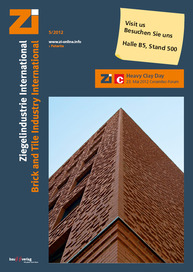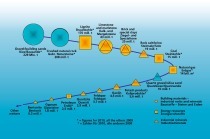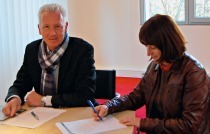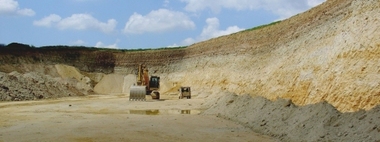Resource efficiency in the clay brick and tile industry – a brilliant contribution to securing the future supply of raw materials
Irrespective of any ranking, one thing is certain: bricks have been made from clay for over 6 000 years and clay is a fossil resource. Clay is formed by weathering, erosion, transport and sedimentation over millions of years in geological periods. With a global clay consumption of around 430 mill. t per year, it is also clear that the reserves of clay are dwindling – it is only a question of time. At first glance it may seem that we do not need to worry about this too much, after all there is enough clay in Germany. But the impression is misleading. Really good clay is already scarce today. In respect of regional raw material reserves, a crucial factor is that the best, that is the surface-near clays have already been exhausted by the brickworks. The extent to which the clay brick and tile industry has been affected is consequently documented by the rising volume of externally supplied clays and the strong dependence on nationally operating clay suppliers.
What could recycling solutions look like? What other possibilities are there to reduce the consumption of natural resources while maintaining the same economic performance? According to current research projects, the use of finely ground broken bricks presents one technically feasible option.
In the paper, supplementing the above option, another approach is presented. This concerns the exploitation of alternative clay potential produced in mineral washing of non-metallic minerals. The potential volume of material is so huge that the entire amount could not even be absorbed by the clay brick and tile industry. A study of the Deutsche Rohstoffagentur (DERA – German Mineral Resources Agency) in 2010 showed that a large part of this washing sludge is potentially suitable for use in the clay brick and tile industry. The grain size ranges of these substances fit almost perfectly into the grain size range of common brick bodies. And the mineral composition does not look too bad either, so that use of these materials appears possible in the production of both clay masonry bricks and roofing tiles.
But here too there is a limiting factor: more than 90% of the washing sludge is currently landfilled and can therefore not be used in the clay brick and tile industry. Less than 10% of the washing slurries are dewatered on filter presses so that they could be used in the form of filter cake. What we urgently need therefore are filter presses instead of sludge landfills. It is important: the filter presses must be in the vicinity of the brickworks. After all resource efficiency should not be bought with bulk transport.
Suddenly a potential of regionally available raw materials is opened up, of which we had no longer dared to dream. That really would be a brilliant contribution to the assured supply of raw materials.
EurGeol Dr. Lutz Krakow, ClayServer GmbH,
Ostercappeln-Venne, Germany


